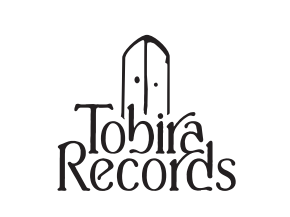Tamborileros del Pastor // Tamborileros del Pastor CD+ZINE
- Availability:
1880年頃からメキシコ北東部を中心に伝承されている儀式音楽ピコタにフォーカスしたCD+ZINEです。
1992年に行われた洗礼式での珍しい録音です。24ページの7"サイズZINEにはピコタの歴史についてのエッセイと写真が掲載されています。表紙の色はランダムにお送りします。
以下、レーベルによる解説です。
"現代のメキシコ北東部では、少なくとも1880年頃から "ピコタ "あるいは "タンボラの音楽 "が演奏されていることが確実に知られている。これは、この地域で知られている最も古い音楽表現であるが、その起源を正確に知る手がかりとなる遺物はほとんど見つかっていない。
タマウリパス州とヌエボ・レオン州を隔てる国境地帯の牧場では、ピコタはもともと雨乞いの儀式で演奏されていたと言われている。エル・アンヘロ村のある住民は、彼の祖父母は、オレンジ、レモン、グレープフルーツの産地である現在の柑橘地方にサトウキビ、豆、トウモロコシを植えるとき、それらは彼らと共存する精霊を呼び寄せるための領土だと言っていたと語る。農民の多くは黒人で、「この世のものではない」と考えられていたが、彼らは他の人々と同じように土地を耕し、自分たちの家族を養っていた。彼らはまた、毎年6月から9月にかけて顕著な雨が降ることで、彼らの仕事を楽にしてくれるメキシコ湾岸からの霊的存在に敬意を払う方法を同僚たちに教えた。
タンボラソ(ピコタの別称)は、田舎の農作業で使われるだけでなく、呪術や異教に由来する典型的な守護聖人のお祝い、結婚式、埋葬、行列、洗礼式、コンヴィテ(洗礼式)などで演奏され、徒弟制度の伝統のおかげで現代にも受け継がれている。コンヴィテは、土着のミトテを現代的に表現したものである。タンボラを先頭に、コミュニティ全体が参加する政治的な行列である。
現在、山間部のいくつかの地域では、葬儀の際にタンボラソを演奏し、冥界に向かう故人の魂に寄り添うと言われている。
ピコタをはじめとする多くの古代ジャンルは、都市化、経済的抑圧、土地の剥奪といったグローバリゼーションの脅威を乗り越えてきた。マヌエル・ペーニャ・ドリアが言うように、歌う塵は塵に還らない。それは永遠を感じさせる。"
レーベルその他作品はこちら /// Click here to see more Transitory Tapes releases available at Tobira.
----------------------
CD packaged in a 24-page Spanish and English zine with background on Música de Tambora and the production of the recording. Front cover may vary.
Tracklist:
- A_1 01:39
- A_2 01:04
- A_3 01:56
- A_4 02:12
- A_5 04:56
- B_1 01:43
- B_2 02:31
- B_3* 05:14
- B_4* 01:29
++
Transitory Tapes:
"In contemporary northeastern Mexico, it is known with certainty that the "picota" or "música de tambora" has been played since at least 1880. Although this makes it the oldest musical expression known from the region, few remnants have been found that reveal precise clues about its origin.
In the ranches of the border area that divides the states of Tamaulipas and Nuevo León, it is said that the picota was originally played during ceremonies to attract rain. A resident of the village of El Anhelo recounts that his grandparents used to say that when sugarcane, beans and corn were planted in what is now known as the Citrus Region – a producer of oranges, lemons and grapefruit – these were territories of invocation of spirits that coexisted with them. Many of the peasants, who were mostly black, were thought to be "not of this world", though they plowed the land in the same way as the rest to subsist and support their families. They also taught their colleagues how to pay tribute to spiritual entities from the Gulf coast that year after year made their work easier with the arrival of prominent rains from June to September.
In addition to being interpreted in agricultural activities in the countryside, the tamborazo – another name for the picota – was played in typical patron saint celebrations of magical-pagan origin, weddings, burials, processions, baptisms and convites, and has been preserved into modernity thanks to a tradition of apprenticeship. The convite is the modern expression of the indigenous mitote. It is a political procession, in which the entire community participates with the tambora at the front.
Currently, in some places in the mountains, it is said that the tamborazo is played at funerals to accompany the soul of the deceased on its journey to the underworld.
Of the picota and many other ancient genres that survive the threats of globalization such as urbanization, economic oppression and the dispossession of land, much remains to be rescued and studied. As Manuel Peña Doria says, the dust that sings does not return to dust. It has a touch of eternity."
Artist : Tamborileros del Pastor
Label : Transitory Tapes
1880年頃からメキシコ北東部を中心に伝承されている儀式音楽ピコタにフォーカスしたCD+ZINEです。
1992年に行われた洗礼式での珍しい録音です。24ページの7"サイズZINEにはピコタの歴史についてのエッセイと写真が掲載されています。表紙の色はランダムにお送りします。
以下、レーベルによる解説です。
"現代のメキシコ北東部では、少なくとも1880年頃から "ピコタ "あるいは "タンボラの音楽 "が演奏されていることが確実に知られている。これは、この地域で知られている最も古い音楽表現であるが、その起源を正確に知る手がかりとなる遺物はほとんど見つかっていない。
タマウリパス州とヌエボ・レオン州を隔てる国境地帯の牧場では、ピコタはもともと雨乞いの儀式で演奏されていたと言われている。エル・アンヘロ村のある住民は、彼の祖父母は、オレンジ、レモン、グレープフルーツの産地である現在の柑橘地方にサトウキビ、豆、トウモロコシを植えるとき、それらは彼らと共存する精霊を呼び寄せるための領土だと言っていたと語る。農民の多くは黒人で、「この世のものではない」と考えられていたが、彼らは他の人々と同じように土地を耕し、自分たちの家族を養っていた。彼らはまた、毎年6月から9月にかけて顕著な雨が降ることで、彼らの仕事を楽にしてくれるメキシコ湾岸からの霊的存在に敬意を払う方法を同僚たちに教えた。
タンボラソ(ピコタの別称)は、田舎の農作業で使われるだけでなく、呪術や異教に由来する典型的な守護聖人のお祝い、結婚式、埋葬、行列、洗礼式、コンヴィテ(洗礼式)などで演奏され、徒弟制度の伝統のおかげで現代にも受け継がれている。コンヴィテは、土着のミトテを現代的に表現したものである。タンボラを先頭に、コミュニティ全体が参加する政治的な行列である。
現在、山間部のいくつかの地域では、葬儀の際にタンボラソを演奏し、冥界に向かう故人の魂に寄り添うと言われている。
ピコタをはじめとする多くの古代ジャンルは、都市化、経済的抑圧、土地の剥奪といったグローバリゼーションの脅威を乗り越えてきた。マヌエル・ペーニャ・ドリアが言うように、歌う塵は塵に還らない。それは永遠を感じさせる。"
レーベルその他作品はこちら /// Click here to see more Transitory Tapes releases available at Tobira.
----------------------
CD packaged in a 24-page Spanish and English zine with background on Música de Tambora and the production of the recording. Front cover may vary.
Tracklist:
- A_1 01:39
- A_2 01:04
- A_3 01:56
- A_4 02:12
- A_5 04:56
- B_1 01:43
- B_2 02:31
- B_3* 05:14
- B_4* 01:29
++
Transitory Tapes:
"In contemporary northeastern Mexico, it is known with certainty that the "picota" or "música de tambora" has been played since at least 1880. Although this makes it the oldest musical expression known from the region, few remnants have been found that reveal precise clues about its origin.
In the ranches of the border area that divides the states of Tamaulipas and Nuevo León, it is said that the picota was originally played during ceremonies to attract rain. A resident of the village of El Anhelo recounts that his grandparents used to say that when sugarcane, beans and corn were planted in what is now known as the Citrus Region – a producer of oranges, lemons and grapefruit – these were territories of invocation of spirits that coexisted with them. Many of the peasants, who were mostly black, were thought to be "not of this world", though they plowed the land in the same way as the rest to subsist and support their families. They also taught their colleagues how to pay tribute to spiritual entities from the Gulf coast that year after year made their work easier with the arrival of prominent rains from June to September.
In addition to being interpreted in agricultural activities in the countryside, the tamborazo – another name for the picota – was played in typical patron saint celebrations of magical-pagan origin, weddings, burials, processions, baptisms and convites, and has been preserved into modernity thanks to a tradition of apprenticeship. The convite is the modern expression of the indigenous mitote. It is a political procession, in which the entire community participates with the tambora at the front.
Currently, in some places in the mountains, it is said that the tamborazo is played at funerals to accompany the soul of the deceased on its journey to the underworld.
Of the picota and many other ancient genres that survive the threats of globalization such as urbanization, economic oppression and the dispossession of land, much remains to be rescued and studied. As Manuel Peña Doria says, the dust that sings does not return to dust. It has a touch of eternity."
Artist : Tamborileros del Pastor
Label : Transitory Tapes









